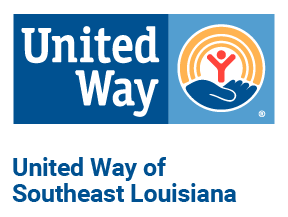Teamwork makes the dream work.
Two heads are better than one.
Many hands make light work.
There’s a reason these familiar adages exist – in most cases, collaboration just makes sense. Nonprofit work is no exception.
In 2016, United Way of Southeast Louisiana launched Collaborative Grants as part of our strategic plan to eradicate poverty in the region. These grants are based on the concept that when multiple organizations from different sectors leverage their collective resources and expertise, they can drive systems-level change at a rate unmatched by a single organization.
Applications are currently being accepted for UWSELA’s 2020-2023 Blueprint for Prosperity Collaborative Grants cycle. If you’re considering forming a collaborative, read on for a first-hand perspective from Lauren King, Director of Workforce Programs at the Greater New Orleans Foundation, part of the New Orleans Works Collaborative. For more great insight, watch this Facebook Live segment with Martha Kegel from the Ending Homelessness Through Systems Change Collaborative.
How has taking a collaborative approach to workforce development allowed you to be more effective in creating lasting change?
The collaborative approach, implemented through Greater New Orleans Foundation’s NOW Collaborative, has allowed us to gather and understand the perspectives of several different stakeholders, inclusive of funders, employers, training providers, community organizations, jobseekers, and incumbent workers from across the region. We have been able to leverage our learnings to build strong partnerships that drive impact. For instance, our employers informed us of their pain points (i.e. attracting and retaining a quality workforce), and we shared that information with our local training providers resulting in a program design based on their collaborative feedback. These open dialogues have aided in the development of defined career pathways in health care, wage increases for over 400 medical assistants, new training opportunity pilots for our residents, and workforce policy changes within the region.
What is the most difficult part of forming or running a collaborative?
The most difficult part of forming and running a collaborative is ensuring the right people are at the table, creating a balance of power and influence among members so that all voices are heard and valued, and moving ideas and concerns into action. The Greater New Orleans Foundation utilizes our experience and convening power to facilitate similar efforts on issues of importance in our region.
What has funding from United Way SELA’s collaborative grant allowed you to do?
Funding from the United Way SELA has been impactful. It has allowed the Greater New Orleans Foundation NOW Collaborative to support transformational partnerships that have created opportunities for jobseekers and incumbents in the health care sector to receive training that led to living-wage employment and an expansion of the model for training and creating career pathways for medical assistants across the state.
In addition, funding from United Way is being used to assist with the identification and career mapping of jobs in the Green Infrastructure sector. These pathways will help to align employer needs with training and be used as part of a campaign to promote community awareness of the new sector and job availability. Additionally, having United Way as a thought partner with a perspective of activities happening around the region has helped to inform the Collaborative’s work and supported innovation. The Greater New Orleans Foundations’ New Orleans Workforce Innovation (NOWI), a post-hire support program, is an example of one such innovation that has emerged as a product of the Collaborative.
How does collaboration benefit the community as a whole?
Collaboration takes the guesswork out of strategic planning by allowing stakeholders to come together and express their collective needs. In this way, workforce training providers do not have to make assumptions about what employers need. Providers are able to hear directly from employers and craft training that aligns with their needs.
In addition, by engaging community-based organizations that can prepare and support residents who are seeking employment opportunities, the Collaborative is able to connect with jobseekers who are job-ready. Likewise, funders are better able to direct funding dollars for optimal impact when they are included in these conversations. Ultimately, when done intentionally, collaboration can result in a well-prepared workforce that incorporates the needs of the workers, employers, and training providers.
